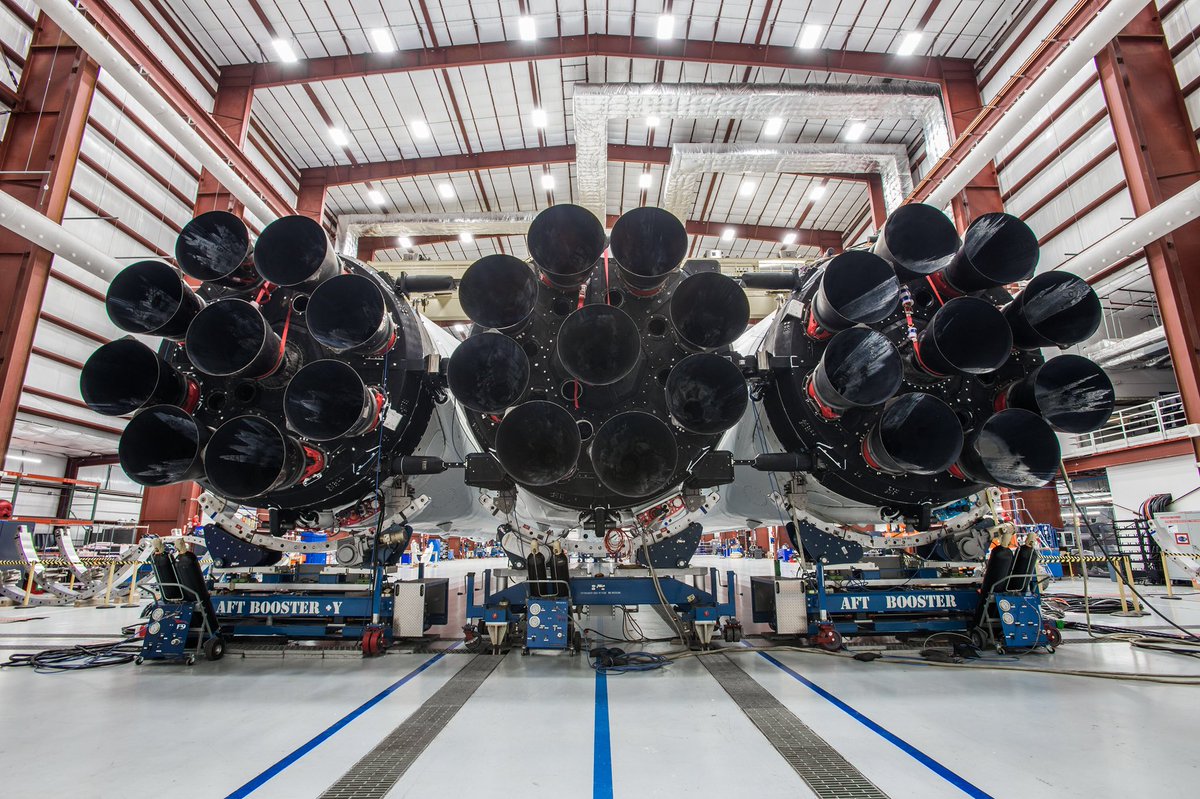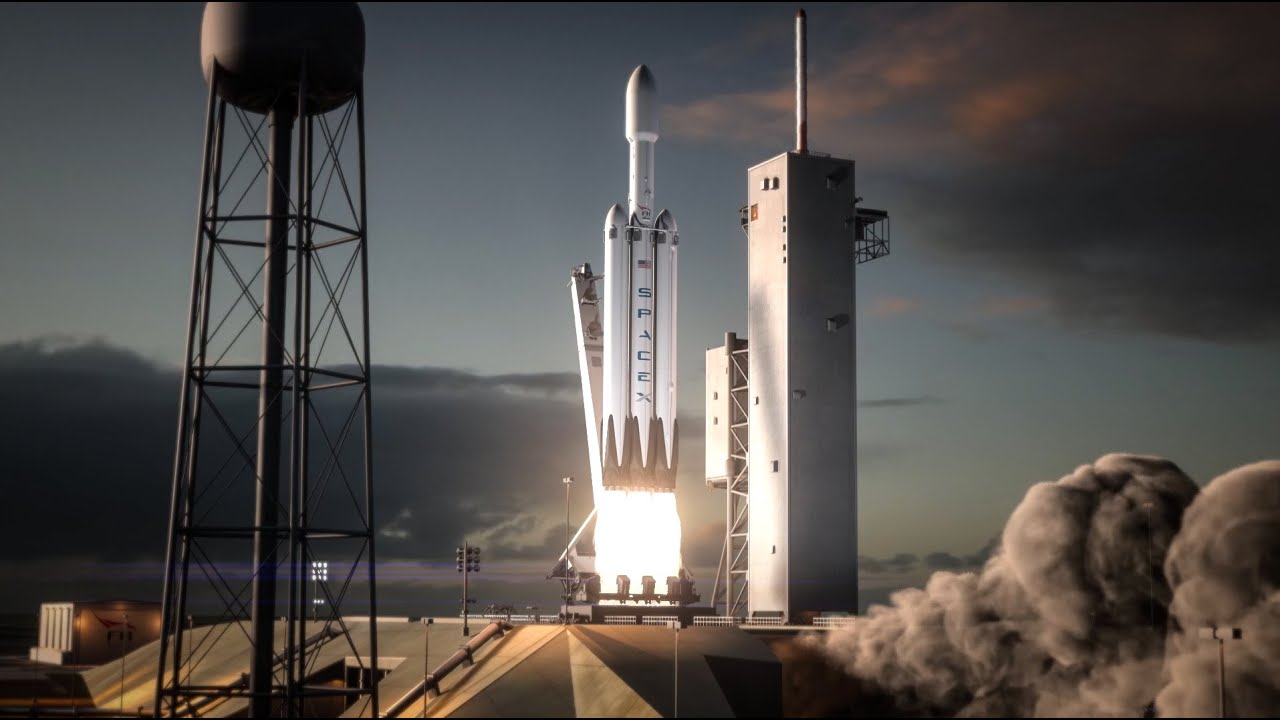
In-Depth View Of SpaceX’s Falcon Heavy Launch Vehicle
Over time SpaceX has managed to cement itself as an unbelievably successful company within the space industry. This goes for many different aspects including launch capabilities, human transport, power, innovation, and much more. Taking a closer look at different launch vehicles can show how and why SpaceX has done so well. All of this with work towards a future goal of putting humans on Mars.
SpaceX’s Falcon Heavy launch vehicle is one of the most fascinating rockets built to date. Some of the features that make this rocket stand out include its performance, structure, and propulsion. While overtime the Falcon Heavy has not had a lot of launches, the few it has had captivated audiences throughout the country and world. This is likely to continue being the case with additional launches planned for the near future.
Rockets are an unbelievably complex vehicle to develop, manufacture, test, launch, and more. This especially is the case when creating one of the largest rockets ever built and the most powerful currently in the world. SpaceX put a lot of time and effort into each aspect of Falcon Heavy. This can be seen in each launch and in different aspects when taking a more in-depth look at the rocket.
Falcon Heavy Overview

The Falcon Heavy is a two-stage heavy-lift launch vehicle powered by LOX and RP-1. Currently, it is the most powerful operational launch vehicle with greater payload capabilities to LEO and GTO than any other rocket. At liftoff, the Falcon Heavy produces just over 5 million pounds of thrust. It was built and designed based on Falcon 9. This has helped ensure the reliability and success of Falcon Heavy throughout time. Not only has this design choice helped ensure the launch vehicle is reliable but it has also minimized infrastructure unique to the vehicle. This saves both money and time and simplifies the process for SpaceX significantly.
Additionally, the Falcon Heavy is partially reusable with all three boosters apart of the first stage designed to fly back towards Earth and land on both ground landing pads along with a drone ship. This helps SpaceX not only save money when launching Falcon Heavy but also speeds up the process a lot with only refurbishment needed rather than creating three brand new boosters. To date, the Falcon Heavy has had three launches, seven landings, and four reflown rockets. This low amount of launches is due to a long list of factors including the success of the Falcon 9, demand, and more. However, future launches are set in motion for Falcon Heavy to continue flying.
Falcon Heavy Features

Performance – The first aspect of Falcon Heavy and the one that makes the launch vehicle stand out is its power and performance. The three boosters along with 27 Merlin engines on the first stage alone help provide a lot of options for orbit and beyond. Some of the main options include LEO with a 28.5 to 55-degree inclination, GTO up to 28.5 degrees, and GSO up to 28.5 degrees. Looking at specific numbers, the payload to LEO is 63,800kg, the payload to GTO is 26,700kg, and the payload to Mars is 16,800kg. It’s important to point out the infrastructure involved in each mission and the role it plays in Falcon Heavy’s capabilities.
SpaceX operates multiple launch sites including Cape Canaveral Space Force Station, Kennedy Space Center, and Vanderberg Space Force Base, to name a few. These locations help SpaceX and the Falcon Heavy pick a specific launch spot that helps the rocket reach the designated orbit or destination. Looking at flight altitude, the Falcon Heavy can provide payload pointing and roll control during long-duration coast phases for sun avoidance and thermal control. SpaceX points out that the Falcon Heavy along with other SpaceX launch vehicles can launch any day of the year, and at any time. This is important in regards to the launch schedule and can be an appealing factor for customers.
Structure – The next important feature of Falcon Heavy is its structure and the design behind the launch vehicle. The first-stage propellant tank walls are made from an aluminum-lithium alloy. The tanks are manufactured using friction welding to provide the highest strength and use the most reliable welding technique available. Separating the LOX and RP-1 tanks is the common dome, and a double-wall transfer tube carries LOX through the center of the RP-1 tank to the engine section. If we take a look at the general Falcon Heavy structure, it starts at the top with the fairings. These are made of a carbon composite material and protect the satellites on their way to orbit. They are 13.1 meters tall and have a diameter of 5.2 meters.
SpaceX is working to recover these fairings after the launch for reuse on future missions. Below is the second stage. Similar to the boosters apart of the first stage, SpaceX draws upon Falcon 9’s proven design. The second stage is powered by a single Merlin Vacuum Engine with a burn time of 397 seconds. This one engine produces 220,500 pounds of thrust. Right below the second stage is the interstage. This is a composite structure that connects the center core on the first stage and second stages and holds the release and separation system. Altogether across all three boosters, the Falcon Heavy is equipped with 12 hypersonic grid fins. These help orient and control the boosters on their descent back to Earth. Lastly at the bottom of the first stage are the landing legs. Each booster has a set of three folding landing legs that deploy right before landing and stay retracted during the majority of the flight.
Propulsion – The last aspect of the Falcon Heavy that I want to go more in-depth into is the propulsion. I mentioned prior the falcon heavy has 27 Merlin engines on the first stage alone producing more than 5 million pounds of force at liftoff. SpaceX provides information about the nomenclature for the center core and the side boosters mentioning that structurally, the plus y-axis and minus y-axis boosters are identical. The center core has thicker walls and carries the booster separation system. Starting with the standard sea-level Merlin engine powered by LOX and RP-1.
This engine is part of a family of rocket engines developed by SpaceX for use on all the Falcon launch vehicles. These engines use the propellants I mentioned in a gas-generator power cycle. You then have the Merlin Vacuum propelling the second stage of Falcon Heavy. Specifically, the Merlin Vacuum features a larger exhaust section and a much larger expansion nozzle. This helps maximize the engine’s efficiency in the vacuum of space. The combustion chamber is regeneratively cooled, while the expansion nozzle is radiatively cooled. SpaceX points out that “at full power, the Merlin Vacuum engine operates with the greatest efficiency ever from an American-made hydrocarbon rocket engine.”
Conclusion
While SpaceX along with other companies and agencies are working on next-generation launch vehicles meant to be far more powerful than Falcon Heavy, for the time being, there is little to no competition. The Falcon Heavy is the most powerful operational rocket in the world with the Delta IV Heavy far behind in second. Not only is the Falcon Heavy powerful but very unique and innovative as well. This can be seen when looking at the launch vehicle’s performance, structure, and propulsion. All of which combine into a single launch vehicle with incredible launch capabilities. While Falcon Heavy has only had a few launches, more are planned for the future. We will have to wait and see what comes next and the impact it has on the space industry.
